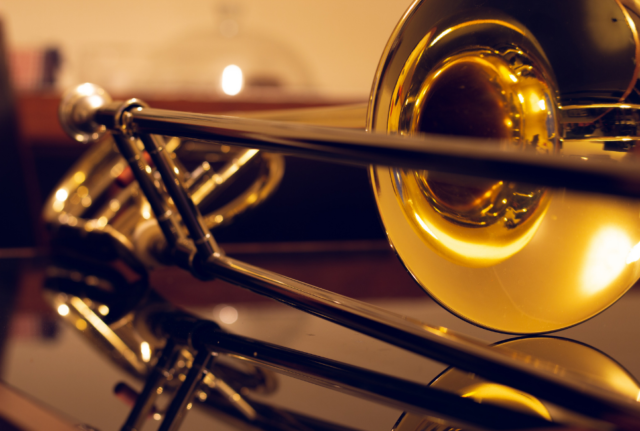A soprano trombone is a type of instrument which fits within the brass family. The first trombones were developed in 1814 by Heinrich Stölzel. While there are many distinct types of trombone, a soprano trombone is used primarily to perform high-pitched notes during musical performances such as for orchestras or bands. Bands and orchestras divide their instruments into sections such as the brass section and wind section, which consists of several instruments, including the flutes and clarinets, and smaller ones such as the alto saxophone and soprano trombone. However, the smaller size of these instruments doesn’t make them any less useful in the orchestra!
Soprano trombone, which has an overall smaller bore than alto and tenor trombones, generally are similar to trumpets in terms of size. Most models have a bell the same size as a Bb trumpet, although the very smallest ones may be smaller. One reason for this is that there is only one mouthpiece shared by a trumpet and soprano trombone – a Bb trumpet mouthpiece fits your soprano trombone just fine! The hand position or location of the slide about where your handgrip is attached to the slide also stays the same when it comes to playing both instruments. A distinguishing feature between these two types of instruments is tone quality. Sopranos are credited with producing brighter sounds due to their higher pitch class.
The trombone is a brass instrument widely used in orchestral, chamber, and jazz settings. In all of these genres, the trombone shares a similar characteristic to the trumpet: the lowest range goes from the note E3 to around C6. The higher notes can be expected to go higher or lower depending on how experienced the player uses an embouchure and different slide positions to reach those notes.
Although the soprano trombone is roughly one-third smaller than a tenor trombone, it contains the same number of notes – seven. Despite its size and cost, the instrument remains an effective blow for many musicians who play with it on stage or record it in the studio. This is because of its inherent tonal quality and ability to play high notes, which align with other brass such as trumpets and flugelhorns.
Even though the soprano trombone and trumpet share some similar physical properties, like being a brass instrument that can be played using a slide, it’s not quite correct to say that the soprano trombone is a “slide trumpet.” The true slide trumpet was an English instrument used in the 19th century, whereas the soprano trombone was first created in Germany around 1850.
Conclusions
Brass may be the last thing you’d want to take up on your journey towards being a fully-fledged orchestral musician but we’re here to tell you that brass instruments are so much easier than people say! Trombone players wanted an upgrade and trombone makers obliged by putting their best efforts into providing models of such high quality that there’s practically no difference between professional and student-quality models. It doesn’t matter if you’re a beginner or an experienced player – freshly released instruments have the finest finishes and a distinctive sound that differentiates them from regular soprano trombone. If you want to buy the latest model then you can explore more information on Alibaba Blog.




